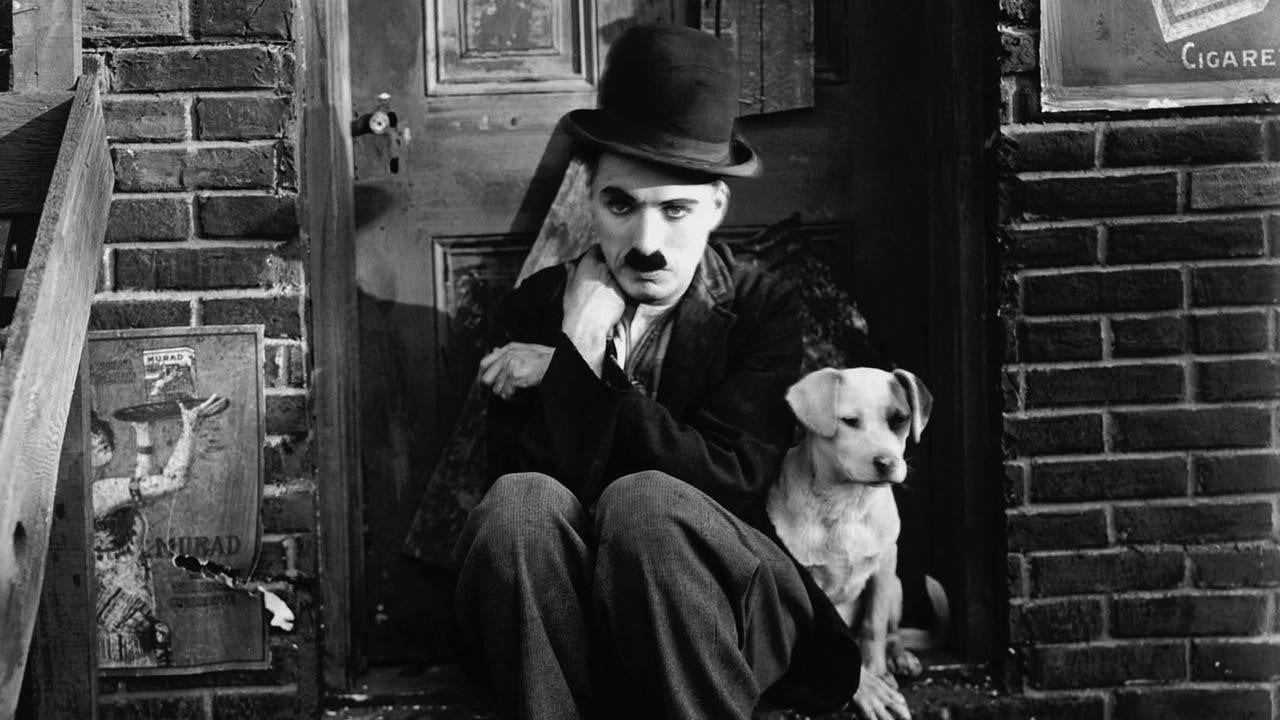Author Jenny Offill talks about inventing the pre-apocalyptic novel. Also, Eric Johnson on how his folk trio Bonny Light Horseman breathes new life into old folk songs. And Wendy Mitchell on her book, “Citizen Canine: Dogs in the Movies.”
Featured in this Show
-
Jenny Offill Pioneers The Pre-Apocalyptic Novel With 'Weather'
You could make the case that the legendary science-fiction author J.G. Ballard created the post-apocalyptic literary genre with such cutting-edge climate-change fiction, or “cli-fi,” in the 1960s as “The Wind from Nowhere,” “The Drowned World” and “The Burning World.” Jenny Offill has put her own spin on cli-fi with her new novel, “Weather.”
“It’s about a librarian named Lizzie who becomes a bit of a climate change doomer,” Offill told WPR’s “BETA.” “Although as the novel moves on, I think she comes out of that dark hole a little bit and moves toward something else. But it’s about the trajectory of sort of first being concerned with your family and friends and those around you and then slowly beginning to think about wider circles of concern.”
Offill says that it was an intentional move on her part to invent this new genre of pre-apocalyptic novels. “I just thought that often I’m trying, when I write a novel, to come closer to the way that I think or the associations that I find I’m having with a particular idea I’m engaging with. And one of the things I noticed about it was how I could just drop in and out of it.”
“And I sort of came up to what I think a bit of a roadblock at a certain point, because I felt like, ‘OK, I know this now. I can’t unknow how dire the situation is, but what am I going to do?’ And is it about individual action? Because I think that to some extent, we’ve sort of been sold a bill of goods about here are 32 tips to green your house. And here’s this. And if you buy the right light bulbs and it’s not really necessarily been about how there are 100 corporations that are emitting the greatest amount of this,” she continued.
“It was a bit of a slow burn for me,” Offill said when asked what ignited her interest in climate change. “I have a very good friend, Lydia Millet, who’s also a novelist and has been working for an environmental organization, the Center for Biological Diversity, for many decades now. And over the years, as we talked about everything else, she would talk to me about this. And I think at a certain point, I started wondering why I was intellectually interested but didn’t feel anything. And then I began to read myself about it and try to learn so that I could understand the science.”
“And then there was just a moment. I think a lot of people talk about this moment when I realized how much worse it was than I had imagined,” she continued. “I think the last time I checked in on climate change, it was supposed to be something that would be terrible for our great-great-grandchildren. And the part where that timetable has moved up significantly was something that spurred me to write this novel. I especially wanted to write about what it is to go from kind of what I think of is like a twilight, knowing about something to looking at it more steadily.”
Offill said that if there was a central question that she was exploring while writing “Weather,” it might have been the question of how is it possible to worry about the whole world? She said that she often becomes entangled with the people around her, not just her family and friends, but also students and neighbors and that often feels like it’s enough to fill her days.
“Also with climate stuff, there’s this very interesting entanglement that begins where you start to notice non-human creatures in a different way,” she said. “I think as you become more aware of how things are interconnected and that was interesting to write about, as well.
Offill’s writing style is very unique because she includes a lot of fascinating facts, quirky quotations and interesting bits of information. She did a bit of this in her debut novel, “Last Things,” and then did more of it in “Dept. of Speculation,” but it’s even more abundant in “Weather.” This creates a simulation of the kind of stream-of-consciousness thinking in which our brains jump back and forth from one thought to another.
“I partly did it because I was trying to find a way to write when the writing wasn’t going well,” Offill explained. “And I’m always someone that has really loved to kind of read across disciplines. I mean, I went to a pretty mediocre public high school. And it wasn’t till I went to college at University North Carolina that I got that course catalog and saw, wow, you know, anthropology, comparative religion, all these different things were very exciting to me to sort of delve into all these different areas and in a way that never quite left me.”
Offill says that her style is often described as “fragmentary.”
“But sometimes the word fragmentary feels a little sharper edged. What I’m doing, because my novels may not be plotted in the traditional way, but I’m very, very interested in emotion and in momentum of emotions. So they’re not fragmentary in the sense that they have sort of no interest in why we like a narrative. Humans love stories and have since we sat around fires, we still like that. It’s like story is as important as melody is in music,” she said. “So when I do something different with it, I try to bring in other things, whether it’s these facts that you were talking about or whether it’s extra attention to sort of the language and what layers might be in the language.”
-
Bonny Light Horseman Make Old Folk Songs New Again
Creative license can be a tricky and rewarding thing.
Eric D. Johnson is the singer-songwriter behind Fruit Bats. He recently talked with Doug Gordon of WPR’s “BETA” as a member of new folk supergroup Bonny Light Horseman. He talked about the group’s debut album; a collection of reworked traditional folk songs, and the joy of introducing them to a new audience.
The group consists of Johnson, Anais Mitchell and Josh Kaufman.
Mitchell recently took home a stack of Tony Awards as the writer behind the Broadway Musical, “Hadestown.”
Kaufman has worked behind the scenes in the recording studio with musicians like The National, Bob Weir and Josh Ritter as a producer and guitarist.
“Josh Kaufman is one of the greatest secret weapons in all of modern music,” said Johnson.
Mitchell and Kaufman had started work on the project when Johnson got involved.
“Anais and I met the stupidest way possible, which was on the internet. Like, she shouted me out on Twitter, which is, you know, sometimes good things happen on Twitter. And that was one of them,” Johnson said. “She was kind of a new Fruit Bats listener and was like, ‘I love this band,’ and tagged me. And I had, funnily enough, just kind of started digging her music, too. So we sort of had discovered each other.”
Mitchell is from Vermont and grew up with folk music in the house. However, Johnson and Kaufman were more acquainted with rock ‘n’ roll.
“He and I are kind of coming from the side door of the The Grateful Dead and The Byrds and Bob Dylan and things like that,” Johnson said. “So I’ve always been interested in folk rock and then working my way backwards.”
So how did the trio choose which songs to work on and how much creative license to take?
“Anais has said time and time again, which I always like to quote her, that, ‘This is not a research project,’” Johnson said.
“I think we had a goal of just like this emotional impact, you know?” he continued. “These songs are these durable pieces of work, you know? And then like with any song, though, if you wrote an original song in the studio, this chord becomes that chord and this word gets changed or something like that. And things just sort of slowly melt into what they need to be.”
The resulting arrangements are sometimes pretty faithful to the source material, and sometimes they’re amalgams of old songs, new lyrics, different keys and time signatures.
Take “Bonny Light Horseman” for example; the title track, and also the band’s name. The song is around 200 years old, but manages to still convey a very contemporary emotional weight while straying quite a bit from the traditional performance.
“Yeah. I mean the song is old and it’s comes from the Napoleonic Wars and I mean, it’s just a song of incredible sadness,” Johnson said. “It’s this completely hopeless story of a man who’s gone to war and his love singing about being a dove, flying across the sea to find him.”
Next up on the album is “Deep In Love,” which almost certainly bears little resemblance to the original, but it’s hard for Johnson to be sure.
“‘Deep In Love’ was a song that was just a melody that I had that was a Fruit Bats demo that didn’t pan out. And then Josh very excitedly was like, I have the lyrics for that!” he said.
Kaufman brought a huge book of traditional British Isles song lyrics and structures with him to the studio, and a light bulb went off when he heard Johnson’s melody.
“Yeah. I couldn’t tell you that I’ve ever heard the original version of that song. I don’t know what it sounds like. We just had the lyrics. I had that chorus, which was, ‘Don’t you break my heart,’” he said. “And Josh, you know, this sounds made up, but completely true. He just opened to that page and said, sing those lyrics over that melody. And it fit completely perfectly.”
“Jane, Jane” comes a little later on the album and has a complicated lineage. It’s pretty faithful to an early 1970s version by Tia Blake.
“I was just madly in love with that version of hers,” said Johnson.
But that version is based on a Peter, Paul and Mary track from several years earlier, which itself is a combination of two older songs, including the Appalachian Christmas song, “Children Go Where I Send Thee.”

Eric D. Johnson, Josh Kaufman and Anais Mitchell of Bonny Light Horseman. Photo by Annie Beedy With all of the tweaking, mixing and matching, do the members of Bonny Light Horseman worry about tampering with the purity of these old folk songs?
“I think Anais, she’s quoting someone else, which is that you can’t break these songs. We’ve used the word durability a lot. I think it’s kind of unbreakable and it’s meant to evolve,” Johnson said.
So is Bonny Light Horseman a one-time endeavor? Or are there more re-imaginings in the future?
“No, there’s re-imaginings the future. We actually already have brainstorming sessions starting to brew,” said Johnson. “Yeah, and we just really love each other too. It’s a good hang.”
-
From Lassie To Beethoven: Author Celebrates Dog Actors
Wendy Mitchell is often in Los Angeles for work. As a contributing editor and writer for several entertainment zines, Mitchell is usually covering more serious film industry fare like how movies are produced or financed. However, on one trip to Tinsel Town, Mitchell bumped into some generational royalty.
“I was having some meetings in LA and happened to meet a dog that was descended from the original Pal who had played Lassie,” Mitchell told WPR’s “BETA.”
That triggered an idea for Mitchell.
“That just really got me thinking about Hollywood history and dogs and why we need to celebrate these canine actors as well as the human actors,” Mitchell said.
So Mitchell compiled a fun and comprehensive list of some of the most iconic pooches from the silver screen in her book, “Citizen Canine: Dogs in the Movies.”
The book covers more than 100 years of film history and 60 dogs. It features dogs from all genres including comedies, family, horrors, kids and even some duds.
“There’s some really great films in the book. There are, to be fair, some dogs of films,” said Mitchell. “Films that maybe are not great, but have a great dog in them.”
“Citizen Canine” offers up some fun facts about filming and the dogs portraying their unforgettable characters, like the famous Brussels Griffon, Verdell, from the Oscar-winning film, “As Good As It Gets” starring Jack Nicholson.
“The dog who played most of the role was called Jill, and so Jack and Jill,” Mitchell quips. “Jill really loved working with Jack, but she would get confused because obviously there’s scenes when he has to be sort of gruff towards her. So here was her buddy Jack, who was nice to her all day during breaks on the set, they’re their best of pals. And then when the cameras are rolling, he has to be a little mean to her.”
Since “As Good As It Gets” took home Academy Awards in both leading acting categories at the 1998 Oscars, we wondered if there shouldn’t be a category for best animal performance. Wendy was happy to play along. She even provided the name: “The Collars.”
We opened with Best Performance by a dog in a comedy.
“I’m going to go with Beethoven,” said Mitchell of the 1992 film, “Beethoven” which features a lovable, but rabble-rousing St. Bernard played in real life by a dog named, Chris.
“I actually spoke to an animal trainer called Teresa Ann Miller, whose dad, Carl Lewis Miller was a really famous dog trainer and he worked with Chris. And she remembered Chris as just being sort of a really chilled out dog. So, I think it is doing some good acting to be this sort of boisterous Saint Bernard that’s ruining their lives.”
Next we moved to the “Collar” for best performance by a dog in a heartbreaking film. Mitchell landed on a tie between the 1957 Disney drama, “Old Yeller” and the 2008 adaptation of journalist John Grogan’s book, “Marley and Me.”
“I have to say, I cried a lot in the researching of this book. I just find dog films so moving. I think if you see a dog ill or slipping away on screen, you think of somebody you’ve lost or a dog you’ve lost. And that can be really emotional,” Mitchell said.
Mitchell also highlighted some strong canine performances from some disturbing or provocative films like Sam Fuller’s 1982, “White Dog” which stars Paul Winfield as a dog trainer trying to reprogram a dog raised to attack black people.
“This film works on many, many levels,” Mitchell said. “Just as a straight story, but also is this dog standing in for a human white supremacist? So, it’s a fascinating story and serious directors and serious films can make the most of dogs as well.”
Mitchell also focuses on films that are all about dogs. The most popular likely being Christopher Guest’s 2000 mockumentary, “Best In Show” following a pack of eccentric dog owners as they compete in the Westminster Dog Show.
“What a film for dog lovers or anybody who’s ever watched the Westminster Dog Show,” said Mitchell. “It also feels like as much as Christopher Guest might be making fun, a little bit, of the dog show world there’s a love too for these people and how much they love and care about their dogs.”
While Mitchell covered films about dogs and dogs in film, we asked what film would be good for dogs.
“If I had a dog, I think one film that I would hope my dog would love would be something like ‘Homeward Bound,’ where it’s really you see less people on screen and it’s about the animals,” said Mitchell. “They might really respond to it because it’s not all these silly people and their dialog getting in the way. It’s, watching these animals triumph and be the real stars and the main event.”
Episode Credits
- Doug Gordon Host
- Brad Kolberg Producer
- Adam Friedrich Producer
- Steve Gotcher Technical Director
- Jenny Offill Guest
- Eric D. Johnson Guest
- Wendy Mitchell Guest
Wisconsin Public Radio, © Copyright 2024, Board of Regents of the University of Wisconsin System and Wisconsin Educational Communications Board.



